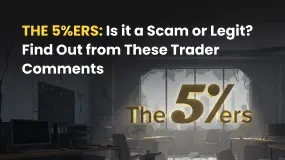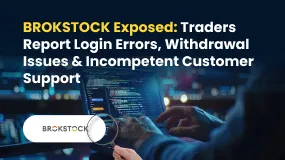简体中文
繁體中文
English
Pусский
日本語
ภาษาไทย
Tiếng Việt
Bahasa Indonesia
Español
हिन्दी
Filippiiniläinen
Français
Deutsch
Português
Türkçe
한국어
العربية
How To Trade Divergences in Forex?
Abstract:Normally, both the price and the technical indicator should move in the same direction. And many traders use different indicators when trading forex in order to get additional confirmation for their signals.

Divergence is one of the most powerful trading signals that combines price action analysis with the use of indicators to help traders look for clues between indicator and price action.
In this article, we will tell you the concept of divergence and explain how it is formed, in the context of the forex markets and relative to the indicators and outline the different types of divergences that are formed.
What Is A Divergence in Trading?
Forex divergence is defined as a case when the price of an asset is moving in the opposite direction of a technical indicator, such as an oscillator.
For example, a divergence forms on a chart when price makes a higher high, but the oscillator makes a lower high. Similarly, price makes lower low but the oscillator makes higher low. It is a warning sign that the current price trend may be weakening, and in some cases may lead to a change in the direction of the price.
The first thing to remember is that divergence itself should not be a signal to enter the market. You must have the main signal, and the divergence will act as a confirmation of this signal.
Different Types of Divergences
There are two main types of divergences, a regular divergence, and a hidden divergence. Let's explain both types in the following lines.
Regular Divergence
This type of regular divergence pattern come in two forms: Bearish Divergence and Bullish Divergence. A bullish divergence occurs during a downtrend, when the price makes lower lows but the indicator makes higher lows. As price and momentum should move in the same direction, if the indicator fails to make a lower low this is a sign that the trend may reverse. In this case, we should expect an upward movement; that is, the trader needs to get ready to buy.
A bearish divergence occurs when price creates higher tops on the chart, while your indicator is giving you lower tops. After a bearish divergence, price usually makes a rapid bearish move. Notice that this happens despite the previous bullish attitude in the price. A regular bearish divergence is a signal that the price is expected to cancel its upward trend and to switch to a downward trajectory.

Hidden Divergences
Unlike regular divergences, a hidden divergence indicates that the underlying trend may continue. Hidden divergences can also be grouped into hidden bullish divergences, and hidden bearish divergences.
To detect hidden bullish divergence, you need to pay attention to the lows of the chart, as well as the indicator. This kind of divergence occurs when the market is upward, drawing high lows, and the indicator reading lower. At times also referred to as positive reverse divergence.
As you probably guess, a hidden bearish divergence has the same character as the hidden bullish divergence, but in the opposite direction. We confirm a hidden bearish divergence when the price is showing lower tops, and the indicator gives higher tops. If you spot a hidden bearish divergence, chances are the current downtrend will continue in the future.

How to Trade with Divergences in Forex?
A divergence does not always lead to a strong reversal and often price just enters a sideways consolidation after a divergence. Keep in mind that a divergence just signals a loss of momentum, but does not necessarily signal a complete trend shift.
You can find divergence with any oscillator indicator. However, the results vary with the currency pairs and the chosen indicator. Among all, we have shortlisted the top three oscillator indicators that can be very helpful in your trading.
1. MACD
The MACD indicator can be very beneficial for finding the divergence and spotting early trend reversal in currencies. You can use the default settings of the indicator on any timeframe. However, it is better to use 1-hour timeframe. You can use take profit and stop-loss at fixed 20 pips difference or you can use the support and resistance levels as well.
2. RSI
The RSI indicator relative strength index identifies the overbought or oversold zones, themselves as entry and exit signals. Another strong trading signal is the RSI divergence indicator.
3. Stochastics
Stochastic is a widely used indicator for divergence. The recommended timeframe is 1-hour while the indicator can be used to exit the trades based on overbought and oversold conditions.
In addition, before you start trading divergence makes sure you go through these trading rules:
-Divergence can only show up in 4 different price scenarios
-For bearish divergence, the swing high prices typically correspond to an indicator's high point
-For bullish divergence, the swing low prices typically correspond to an indicator's low pointThe -slope – or the angle of the line connecting the highs and lows tells us how strong the divergence actually is
-Never chase divergence if the price action played out

Disclaimer:
The views in this article only represent the author's personal views, and do not constitute investment advice on this platform. This platform does not guarantee the accuracy, completeness and timeliness of the information in the article, and will not be liable for any loss caused by the use of or reliance on the information in the article.
Read more

WikiFX Elite Club Committee Makes Its Debut, Charting the Future of the Global Trading Ecosystem
November 11, 2025 – The WikiFX Elite Club Committee (hereafter “the Elite Committee”) made its significant debut on the international stage at WikiEXPO Dubai 2025. Core members from the Middle East, Southeast Asia, and Chinese-speaking regions gathered to witness the beginning of a new chapter for the Elite Club.

WikiEXPO Dubai 2025 Concludes Successfully — Shaping a Transparent, Innovative Future
On November 11, WikiEXPO Dubai 2025, hosted by WikiGlobal and co-organized by WikiFX, successfully concluded. As one of the world’s most influential Fintech expos, this event brought together more than 570 regulatory representatives, industry leaders, and innovation pioneers from across the globe. Through in-depth discussions on core issues such as regulatory compliance, the forex market, investment strategies, and sustainable finance, the event delivered a profound experience that masterfully blended intellectual depth with actionable insights.

The 5%ers Review: Is it a Scam or Legit? Find Out from These Trader Comments
Did you face reduced leverage and hiked fees without any explanation from The 5%ers broker? Do you find The 5%er rules strange for getting a funded account from this prop trading firm? Has the broker closed your trade inappropriately, preventing you from making gains in the forex market? All these allegations have dominated The 5%ers review segment online. Looking at this, the WikiFX team investigated and found some startling comments against the broker. In this article, we have shared those complaints. Read on!

BROKSTOCK Exposed: Traders Report Login Errors, Withdrawal Issues & Incompetent Customer Support
Is your BROKSTOCK trading account full of inefficiencies? Do the recurrent BROKSTOCK login errors prevent you from opening and shorting positions at a favorable price? Has the broker failed to honor your withdrawal requests? Do you face order execution price issues? Has the customer support service failed to resolve your queries? You are not alone! In this BROKSTOCK review article, we have shared some complaints that need a close introspection. Read on to explore them.
WikiFX Broker
Latest News
Forex Expert Recruitment Event – Sharing Insights, Building Rewards
Admirals Cancels UAE License as Part of Global Restructuring
Moomoo Singapore Opens Investor Boutiques to Strengthen Community
OmegaPro Review: Traders Flood Comment Sections with Withdrawal Denials & Scam Complaints
An Unbiased Review of INZO Broker for Indian Traders: What You Must Know
Is Fyntura a Regulated Broker? A Complete 2025 Broker Review
PINAKINE Broker India Review 2025: A Complete Guide to Safety and Services
Is Inzo Broker Safe or a Scam? An Evidence-Based Analysis for Traders
Is Uniglobe Markets Legit? A 2025 Simple Guide to Its Safety, Services, and User Warnings
Is Forex Zone Trading Regulated and Licensed?
Currency Calculator



